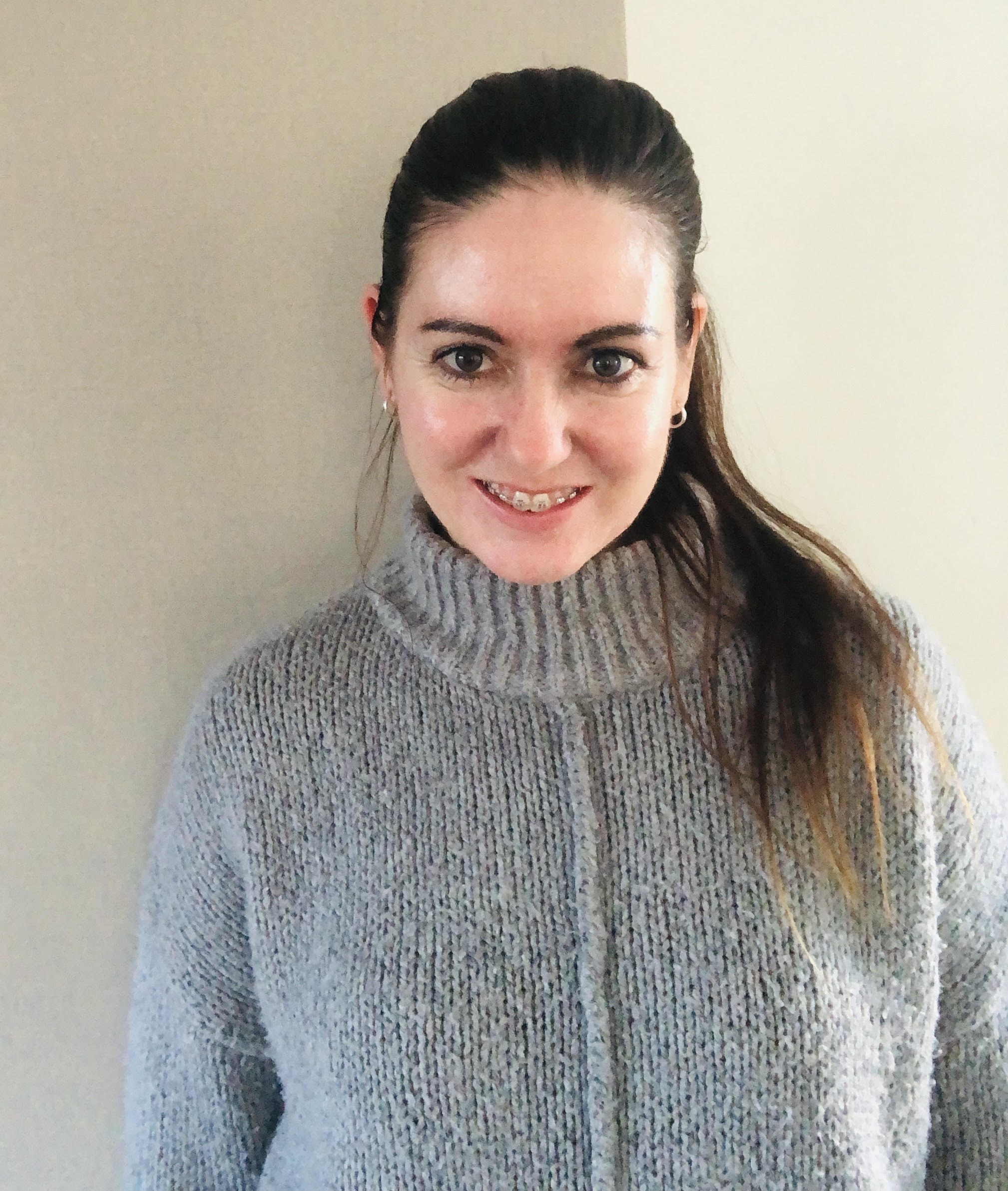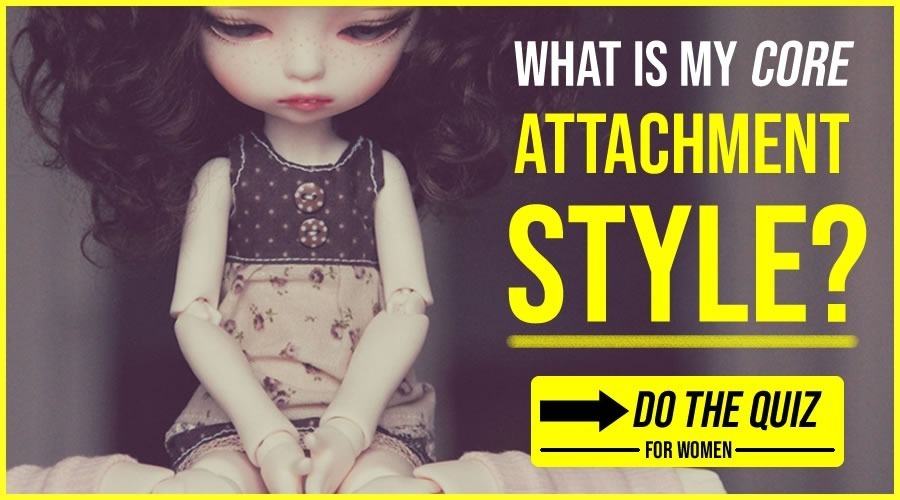NCRW
Fearful avoidant Vs Dismissive Avoidant: Differences & FAQ
Author: Sarah Meyer & Renée Shen
Are you looking to understand the differences between fearful avoidant vs dismissive avoidant attachment?
It’s not too hard to understand. But in order to understand the difference, we have to define anxious and avoidant attachment first.
So, in this article we will:
- Address what avoidant attachment is
- What anxious attachment is
- The differences between fearful avoidant vs dismissive avoidant; and then
- Answer all of the frequently asked questions on the topic of fearful avoidant and some questions on dismissive avoidant
(Why is this important? It is because your core attachment style largely dictates and influences what happens in your relationship. Thus it’s imperative you understand your core attachment style!)
Table of Contents
What Is Dismissive Avoidant Attachment Style?
First we need to distinguish anxious attachment from avoidant attachment.
Avoidant attachment - also called dismissive avoidant attachment - is an attachment pattern where an individual manages relationship stress by avoiding their partner and the relationship in general.
People with avoidant attachment patterns tend to engage in a lot of
- Withdrawal
- Distancing; and
- Dismissing behavior
What Is Anxious Attachment Characterized By?
Anxious or preoccupied attachment, on the other hand, is characterized by:
Hyper-focus on the relationship
Frequent reassurance-seeking; and
Clingy or controlling behavior
Related: How To Overcome Anxious Preoccupied Attachment: 7 Proven Steps.
What Is The Difference Between Fearful Avoidant And Dismissive Avoidant?
A dismissive avoidant is someone whose behavior when getting close to someone is well-described by the dimension of attachment avoidance.
Their behavior doesn’t show too many elements of anxious attachment.
This means that the dismissive avoidant will be somewhat consistent in their response to relationship stress, tending to go to withdrawal and repression most of the time.
A fearful avoidant, however, is someone who sometimes acts according to the avoidant pattern, and sometimes acts according to the anxious/preoccupied pattern, depending on their state of mind and the situation.
What Are Dismissive Avoidant Afraid Of?
Dismissive avoidants might be generally afraid of feeling vulnerable and uncomfortable.
They usually set up their relationships in such a way that minimizes closeness and maximizes freedom and autonomy.
This is because they want to make sure they can get away from situations that trigger them at a moment’s notice.
They may also be uncomfortable with or afraid of things like:
- Commitment
- Emotional intimacy
- Emotional expression; and
- Other forms or markers of interdependence
Committed, close relationships pose a lot of uncertainty, and can be very intense.
Because people with a dismissive avoidant attachment pattern find it difficult to regulate their emotions, dealing with the highs and lows of a truly invested relationship can feel very costly and demanding to them.
They may prefer to repress their emotional response and shut down rather than to work through the painful and scary emotions associated with love in a world where loss and confusion are inevitable.
Because they likely experienced neglect and/or abuse in childhood, and decided it wasn’t safe to rely on other people, they may also expect things to turn out worse than they really will.
Ultimately, people with dismissive avoidant patterns are afraid that:
- They are better off alone
- That other people will only hurt them or let them down; and
- Disappoint them
Ironically, they may cope with this fear by making it their reality (living as though it’s already happened to them).
Because if they always knew it was going to happen, they never have to really feel it, right?
Case study: Discover how Alison ended her cycle of abusive relationships by learning to quickly weed out the "wrong types of men", inspiring deep devotion from her chosen man and passing the hardest test of them all - an accidental pregnancy after a month of dating! (...All because of this one simple skill every woman should have.)
Can A Fearful Avoidant Fall In Love?
Short answer: yes they can, but it requires some conscious focus on love and connection rather than fear.
A fearful avoidant is usually somebody who has been through considerable childhood abuse and hardship.
It takes quite a lot to disrupt a person’s normative attachment patterns - which start with the bond between an infant and its primary caregiver, usually its mother.
Remember: both attachment avoidance and attachment anxiety dominate a fearful avoidant’s approach to relationships.
Usually, even when our early experiences with attachment are far from ideal, we come to rely on one fairly coherent insecure attachment pattern to mitigate our uncertainty and loneliness.
We usually find that either trying to please everybody, which is characteristic of anxious attachment, or stepping back and letting other people come to us first, which is characteristic of avoidant attachment, helps us feel more in control of our relationships.
For a fearful avoidant, neither of these strategies has worked.
Instead, the fearful avoidant has been faced with unpredictable responses from his mother and other family members, and this has left him or her afraid to commit to any particular pattern.
They are all over the place because:
- They don't know how to work out what their relationship partners actually want from them
- They don't know how to secure love; and
- They’re dealing with a lot of intense emotion that makes it hard to tolerate uncertainty, waiting, or listening
Despite this, a fearful avoidant can fall in love.
Whether he or she does, though, depends largely on how well their partner can understand them and anticipate their needs, and how willing they are to help them work through the defensive patterns that keep them from getting close to their lover.
This is not an easy task, and it is not something that a fearful avoidant is owed by anyone. It is purely a labor of love and there are no guarantees.
I do believe, though, that the primary condition for changing attachment patterns is to experience a healthy relationship where one or both partners acts as a safe place for the other.
MORE: Fearful Avoidant Attachment Style: 10 Signs & How To Heal.
As long as a person is:
- Preoccupied with themselves
- Avoiding pain for themselves; and
- Controlling the relationship for themselves
They are unlikely to fall in love. This is something that all of us can fall into from time to time though, and it’s a good idea to practice ways of shifting our mindset.
Specifically, shifting our focus away from these fears and towards the other person or towards what the relationship could become.
Some of this process - for fearful avoidants and for the rest of us - involves:
- Surrounding ourselves with healthy relationship stories and models, whether through movies, books, or understanding the psychology behind them
- Practicing staying present with difficult emotions (by listening to music, waiting before we speak or react, noticing our own responses)
- Spending time thinking deeply about how our partner might feel
- Feeling, experiencing, and becoming certain in our own value as an individual
- Accepting uncertainty and pain as part of life
(Why is this important? Because men and women perceive value very differently and you don’t want to be making mistakes that would cause quality men to dismiss, abandon or alienate you.)
Can A Fearful Avoidant And Dismissive Avoidant Be Together?
Ideally, if one person has an insecure attachment style, they will experience the most personal growth when partnered with a securely attached person.
This is because people with secure attachment styles are usually more stable and more emotionally available than people with insecure attachment styles, at least when it comes to intimate relationships.
Recommended: 13 Warning Signs Of An Emotionally Unavailable Man.
Over time, being partnered with a securely attached person helps an insecurely attached person relax in the relationship, giving them enough space and enough certainty to observe their own attachment patterns.
This kind of partnership will also help reveal the insecurely attached person’s triggers and biases, as their responses will look and feel very different from their partner’s.
A securely attached partner can provide consistent love and warmth, holding space for the insecurely attached partner so they are able to process their pain and fear, and move towards trust in the relationship.
A dismissive avoidant and a fearful avoidant, unfortunately, will find it harder to get out of fear and power struggles in their relationship.
Of course, this depends on the individuals involved and their level of commitment to each other, as well as the resources they are able to access.
But the typical pattern that we might see is one where both partners trigger each other.
Due to the fact that both partners are prone to withdraw when they sense relationship stress, we might expect a dismissive avoidant and a fearful avoidant to have a hard time maintaining closeness, a hard time dealing with conflict, and difficulty reconnecting after an argument.
One example of this kind of relationship could be the relationship between Johnny Depp and Amber Heard.
In his court testimony, Johnny Depp described an abusive childhood where he was neglected and harmed by his mother, and admitted he has a hard time trusting others.
He tends to withdraw when under stress, or to escape by drinking alcohol or using substances.
His behaviour, as described in court at least, seems to show some characteristics of dismissive avoidant attachment.
Amber Heard, who is diagnosed with Borderline Personality disorder, shows signs of both high attachment anxiety and high attachment avoidance, matching the fearful avoidant pattern.
Their relationship is an extreme example, but clearly shows how fearful avoidant attachment patterns such as: extreme jealousy, controlling and clingy behavior, dramatic shifts in mood and responsiveness, and aggression, can exacerbate the dismissive avoidant’s tendency to escape and withdraw.
This sets up a cycle of distance, frantic lashing out, and then even further distance.
Is Fearful Avoidant The Same As Disorganised?
Fearful avoidant attachment is another term for disorganized attachment.
We sometimes use the term disorganized attachment because the person’s behavior is not organized according to a single, coherent attachment strategy, as is the case with dismissive avoidant or anxious/preoccupied attachment.
Instead, their behavior in relationships will look disorganized and confusing, as they draw somewhat haphazardly from both avoidant and anxious strategies for managing relationship stress.
For example, they might be extremely clingy and seek out a lot of reassurance from their partner on one occasion, acting out the anxious/preoccupied pattern.
Yet on another occasion, they might shut down or withdraw, in line with the typical avoidant pattern.
This switching of attachment strategies is what we call disorganized attachment.
Are Fearful Avoidants Narcissists?
More research needs to be done to explore the connection between attachment patterns and personality disorders such as narcissistic personality disorder and borderline personality disorder.
Some clinicians have noted that high levels of attachment anxiety and attachment avoidance increase the degree to which a person is preoccupied with admiration and recognition from others, a feature of narcissistic personalities.
Others have found that both attachment anxiety and attachment avoidance are related to the use of self-protective strategies in social interactions, and the tendency to be competitive with other people.
This kind of behavior is also associated with narcissism.
It makes sense that fearful avoidants, who are high in both attachment anxiety and attachment avoidance, would display some of these narcissistic patterns.
They may have grown up with narcissistic parents themselves, and experienced emotional, physical, or sexual abuse in the form of:
- Parental rage
- Frightening or unpredictable parental behavior
- Conditional love
- Constantly shifting standards for love and approval, depending on the parent’s mood and fragility
- Gaslighting and confusion
- Instability
Generally, though, fearful avoidant attachment is more strongly associated with borderline personality disorder than with narcissistic personality disorder, especially where attachment anxiety is very high.
Dismissive avoidant attachment, rather than fearful avoidant attachment, on the other hand, may be the more relevant pattern to consider when it comes to narcissistic individuals.
People with dismissive avoidant attachment patterns tend to see themselves as being worthy of time and attention while seeing other people as being unworthy of being close to them - which is consistent with narcissistic views of the self and the other.
Of course, there is some overlap between borderline personality disorder and narcissistic personality disorder, and people with borderline personality disorder are more likely than other people to be narcissistic as well.
What Does A Fearful Avoidant Need?
Everyone is different, but just like everyone else, a fearful avoidant needs predictable love and safety.
They need to feel anchored in a relationship, like they know what to expect and to feel reassured that they are loved and valued.
They may also need a partner who has good boundaries - someone who will not accept emotional abuse, lashing out, or controlling behavior.
This is not necessarily someone who will walk away at the first sign of toxicity, but someone who will model trust and respect for them, and expect the same in return.
Being involved with someone who displays fearful avoidant attachment patterns will not be for everyone, and a lot of patience and self-awareness is needed.
With time, the fearful avoidant can learn to regulate their attachment anxiety and avoidance, and to be less reactive when they feel threatened.
What Triggers A Fearful Avoidant?
A fearful avoidant might be triggered by unusual things compared to a securely attached person.
For example, they might find expressions of love and affection disturbing and stressful, particularly if this is the first time you have shared these kinds of feelings in your relationship.
For a fearful avoidant, the process of becoming attached to someone can feel very scary for a fearful avoidant, given their usually traumatic history.
Specifically, becoming attached to someone can prompt all sorts of frantic behavior in order to manage the perceived threat and maximize their sense of control.
Other triggers could include:
- Changes to your relationship
- Your close relationships with other people (even friends and family)
- Situations where they feel inferior or inadequate
- Conflict in the relationship
- Communicating about relationship issues
- Feeling blamed
- Feeling uncertain of your commitment
- Guilt about their own behavior
Should You Date A Fearful Avoidant?
Dating a fearful avoidant is not for everyone.
Here’s a guide on dating someone with disorganized (fearful avoidant attachment): Dating & Disorganized Attachment: 5 Signs Of It + FAQ.
Generally speaking, individuals with fearful avoidant attachment patterns face more challenges to forming stable and lasting romantic relationships than individuals with any other kind of attachment pattern.
Being in such a partnership will be stressful and draining at times, and will require a lot of:
- Love
- Understanding
- Patience; and
- Sacrifice
This does not mean, however, that every relationship with a fearful avoidant is doomed to failure.
We can all be vulnerable to mistreating and abusing others, and we all have painful memories and habits that make us less generous and available than we could be.
So while it is generally better to have a partner who inspires us to leave our fears behind and to grow and become more, sometimes the person we love and are invested in needs our help to let go of their own pain first.
And sometimes, helping them process this pain helps us process our own too - freeing us up to pursue conscious healing together.
Final Words On Fearful avoidant Vs Dismissive Avoidant
Fearful avoidant and dismissive avoidant share some behavioral characteristics, but ultimately, they are different attachment patterns.
Specifically, a dismissive avoidant will respond to intimacy and relationship stress by shutting down, avoiding intimacy and conflict, and by running away (in a nutshell, they’re emotionally unavailable most of the time).
On the other hand, a fearful avoidant will sometimes seem very clingy and needy. They’ll also be hyper focused on the relationship, controlling and at other times they will be highly emotionally unavailable, shut down, and invulnerable.
The easiest way to remember fearful avoidant attachment style is to think of it as a manifestation of intense expression of anxious attachment as well as avoidant attachment.
In other words, you’ll see extreme expressions of clinginess and excessive need for reassurance as well as extreme expressions of emotional unavailability and an unhealthy need for autonomy.


Sarah has a Masters in psychology and works as a special education advisor in early childhood. She lives in Auckland, New Zealand, with her partner and two children. She has a passion for evolutionary psychology, attachment theory, and personality psychology.
Sarah Meyer
Author & Editor For National Council for Research on Women. Founder of the popular women's dating & relationship advice website, The Feminine Woman.
Renée Shen
P.S. I hope you've enjoyed this article. Here are some other articles that I think you'd really like too...
The 4 Types Of Attachment Styles & Which One Are You?
8 Unusual Signs He Will Eventually Commit
8 Signs An Avoidant Loves You + How To Inspire More Of It
20 Deadly Signs A Man Has Anger Issues + How To Resolve Them
© Copyright National Council for Research on Women. All Rights Reserved




